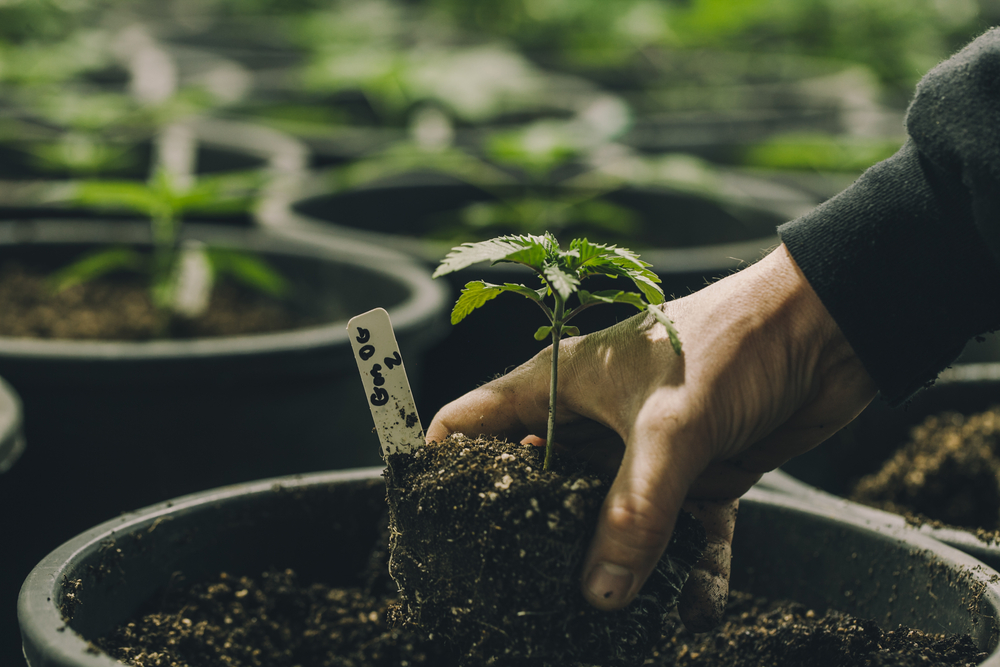by Beau Whitney, Whitney Economics
When it comes to the national and state cannabis markets, most of the conversation is centered around demand. Cannabis investors have for years raised funding based on the potential of the market, or on the growth in demand. Cannabis business operators have talked about capturing market share and, of course, policymakers have always talked about taxes. Until recently, very little data was available on cannabis supply. On December 1, my team at Whitney Economics published a report on the total cannabis supply in the U.S. market. We wanted to share some of our data and insights with the NCIA community.
The Supply and Demand of American Cannabis
The total cultivated output of cannabis in the United States in 2022 is 48.8 million pounds. This figure may be surprisingly large to some people, because it includes both legal and illicit cannabis supply, and addresses all delivery methods, including flower, edibles, concentrates, and other products. Current legal sales of cannabis will be an estimated $29.3 billion in 2022, and are projected to be at $81.6 billion by 2030.
Interesting Fact about Cannabis Demand: Unless there is some major development in cannabis application or market conditions, the total demand for cannabis will not grow substantially over the next decade. Instead, demand will shift from the illicit market to legal channels for cannabis. There will be more legal supply than illicit cannabis supply in the U.S. by 2026 or 2027. While the total number of consumers will be rather consistent, the value of the cannabis market (in terms of dollars) is actually forecasted to decline over time as more and more states come online and competition from both inside and outside of the U.S. drives down prices.
Consumer Consumption is Consistent and Predictable
The U.S. cannabis market is as big as it seems, with one out of three adults over the age of 18 consuming cannabis at least once in the past year. That number currently equates to more than 80 million adults. The report also includes data on total consumption, which is extremely consistent from state market to state market. Consumption is the basis for the amount of supply in a market.
Interesting Fact about Consumer Participation: When it comes to purchasing cannabis products, consumers remain very price sensitive. That is to say that the “elasticity of demand” is very high. This elasticity number can be used to predict legal consumer participation levels, based on how much higher the legal price is than the illicit price. Predicting consumer conversions into the legal market is not that difficult to do.
Consumer participation in the legal cannabis markets is very predictable and based on three factors:
- Price of legal cannabis relative to the illicit cannabis market
- Availability of legal cannabis supply
- Ease of access to legal cannabis
These three factors are interrelated. For example, if supply or access is limited, prices will rise and there will be less legal participation. Or if policy makers tax cannabis too much, the rate of legal conversion will slow significantly and policies surrounding public safety will be impacted. There is a sweet spot, however.
There Can Also Be Too Much Supply
On the other hand, if there is too much supply, this can be harmful to cannabis businesses as it creates a pricing race to the bottom. When businesses compete on price, profit margins are compressed, and businesses fail. States including Oregon and Michigan are currently in that situation, as prices have collapsed and some licensees are calling for cannabis business licenses to be limited.
State-by-State Cannabis Cultivation Capacity
In the 2022 U.S. Cannabis Supply Report, we were able to calculate the total legal cultivation capacity of every state in the country. California leads the nation in cultivated output at 22.2 million pounds this year alone. Using this valuable information, investors, operators, regulators, and other stakeholders in the U.S. cannabis industry can see which state markets are oversaturated by supply.
Interesting Fact about Cannabis Cultivation: Today, the total legal cultivation capacity that has already been licensed is greater than the total U.S. demand (illicit + legal) for cannabis. With more and more states coming online, this imbalance will only get more pronounced. Business operators in the cannabis industry should ready themselves for a reckoning when it comes to their profit expectations.
New Analytical Tools Have Been Developed That Combine Supply and Demand
The development of an integrated supply and demand model that encompasses both the legal and illicit markets for cannabis in the United States is a significant development for the cannabis industry. Stakeholders in every state now have the capability of assessing the market for operational, investment, and regulatory risks with granularity. Policymakers at the state and community levels can incorporate both these supply and demand models in order to make informed, data-driven decisions. There is a lot of potential in these new tools, and we are just beginning to scratch the surface of bringing a higher degree of sophistication and analysis to the cannabis industry.
 Beau Whitney is the founder and Chief Economist at Whitney Economics, a global leader in cannabis and hemp business consulting and economic research, and has served as Senior Economist for NCIA.
Beau Whitney is the founder and Chief Economist at Whitney Economics, a global leader in cannabis and hemp business consulting and economic research, and has served as Senior Economist for NCIA.
Serving an international clientele, Beau is considered one of the leading cannabis economists in the U.S. and globally. His applications of economic principles to create actionable operational and policy recommendations has been recognized by governments, and throughout the economic, investment, business communities.
Drawing upon his previous hi-tech experience, Beau has applied his supply chain and operations expertise to the cannabis industry, where he has designed and implemented efficiencies into the cultivation, extraction, edible manufacturing, wholesale and retail distribution operations of a vertically integrated cannabis operation, that eventually went public in 2015.
His Whitney Economics and New Frontier Data white papers analyzing the adult-use, medical and industrial cannabis markets have been referenced in Bloomberg, the Wall Street Journal, Washington Post, New York Times, USA Today, the Associated Press, as well as in leading cannabis industry publications. Whitney is a member of the American Economic Association, the Oregon chapter president of the National Association of Business Economics, is a member of multiple regulatory advisory committees throughout the U.S. and participates on the Oregon Governor’s Council of Economic Advisors.
Beau has provided policy recommendations at the state, national and international levels and is considered an authority on cannabis economics and the supply chain.


Follow NCIA
Newsletter
Facebook
Twitter
LinkedIn
Instagram
–